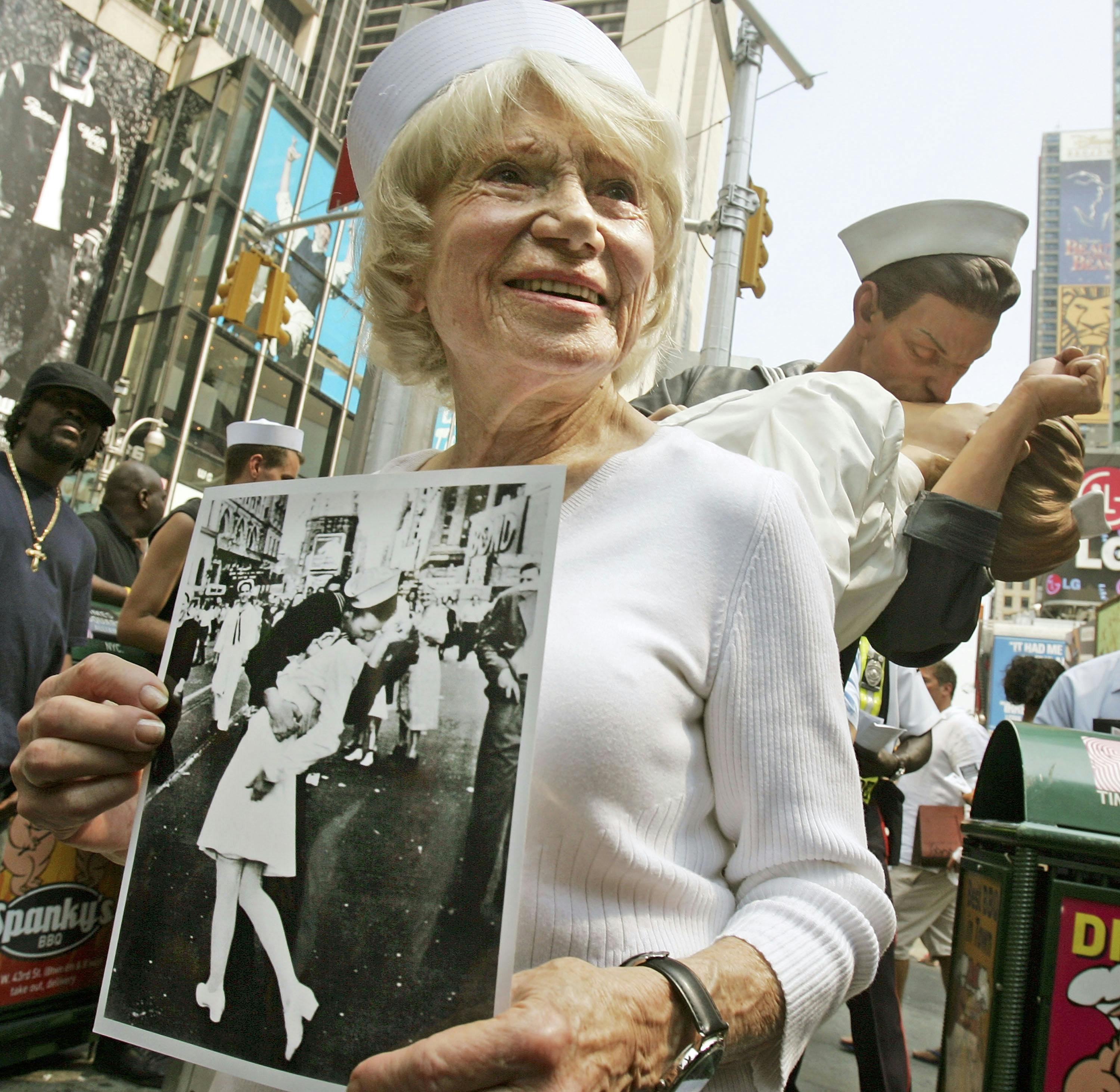There’s long been a mystery surrounding the exact circumstances in the famous photo known as “V-J Day In Times Square,” or sometimes just “The Kiss.” We don’t know for sure who’s in the photograph, for one. The nurse being kissed is widely believed to be Greta Zimmer Friedman, who told Life magazine—where the photo originally appeared—that it was her hairdo, her figure, and her outfit on that day. (The photographer, Alfred Eisenstaedt, apologized to her for not getting her permission before making the photograph among the most famous ever taken.) The man doing the kissing, though, is a bigger mystery. There are no shortage of men who claim to be the sailor planting a kiss on Friedman, but a lot of those claims have been debunked. George Mendonsa said he was the man, and a book published in 2012 tells the story of his day, tracking what happened before the afternoon during which he reportedly grabbed Friedman and kissed her while she was on her lunch break.
A team of astrophysicists at Texas State University analyzed the image last year to determine the time of day it was taken, though, and found that, based on the position of the sun and the shadows, it was taken much closer to six in the evening.
That might rule out Mendonsa and Friedman, but it doesn’t tell us who the people in the photo are. It’s something that we’re likely to be left wondering—the faces aren’t visible, so there’s really no way to know.
People in the photograph whose faces are clear, though, are easier to identify. And one of them—the sailor in the dark uniform on the far left of the photo—was Howard Coghlan, a Longview attorney who died last week at the age of 89. He had long known that he appeared in the photo, but according to Texas Lawyer, his son didn’t learn why he kept a framed print of the image in his office until 2007.
Coghlan’s legacy began before his law career, through his service during World War II. He appears in the background of the iconic “Kissing Sailor” photograph of a sailor kissing a nurse on V-J Day in August 1945 in Times Square.
Coghlan’s son, Kelly, of Coghlan Law Firm in Houston, said he didn’t know until around the time Howard Coghlan received the 50-Year Lawyer award in 2007 that his father, who enlisted in the U.S. Coast Guard in 1945, appears in the photo, which became famous after it was printed in Life magazine. Kelly Coghlan said his father is the laughing serviceman wearing black to the left of the kissing couple.
Kelly Coghlan said his parents had a framed copy of that photo in their house, but he never thought to ask why. According to Kelly Coghlan, Howard Coghlan didn’t realize anyone had taken his photograph that day, but a friend on his ship identified him after seeing the magazine photo. Kelly Coghlan said his father told him that the kissing couple captured in the photo wasn’t unique. “We were kissing girls left and right,” Kelly Coghlan recalls his father telling him.

The fact that they “were kissing girls left and right” probably helps explain why so many people think that they’re the couple in the photo—both of the people Eisenstaedt captured with his camera are wearing uniforms, and there was probably a lot of sailors grabbing nurses to celebrate the end of the war.
One question that’s come up around Friedman’s characterization of what happened to her, though, is whether it’s as romantic as it seems. Friedman noted that she didn’t have much connection to the man who kissed her, telling the Library Of Congress in 2005 that “I felt he was very strong, he was just holding me tight,” and “it wasn’t a romantic event.”
“It wasn’t my choice to be kissed,” she told the Veterans History Project. “The guy just came over grabbed.” Time magazine noted in 2014, when revisiting the photo originally published in its now-defunct sister publication, that “many people view the photo as little more than the documentation of a very public sexual assault, and not something to be celebrated.”
Friedman, who died in 2014, didn’t see it that way, according to her obituary in the New York Times—but she understood why others might. But the photo is no less important just because it does not depict an outpouring of passion between two people who’ve missed each other while the nation was at war. Rather, it’s a fascinating and significant document of a unique day in American history. There haven’t been many days of national jubilation to match the end of World War II, and though perhaps this lone image shouldn’t singularly define the day, it’s nonetheless a glimpse of a nation experiencing a moment of celebration. It may not be romantic, but it’s a thing worth understanding—and Howard Coghlan lived it.








